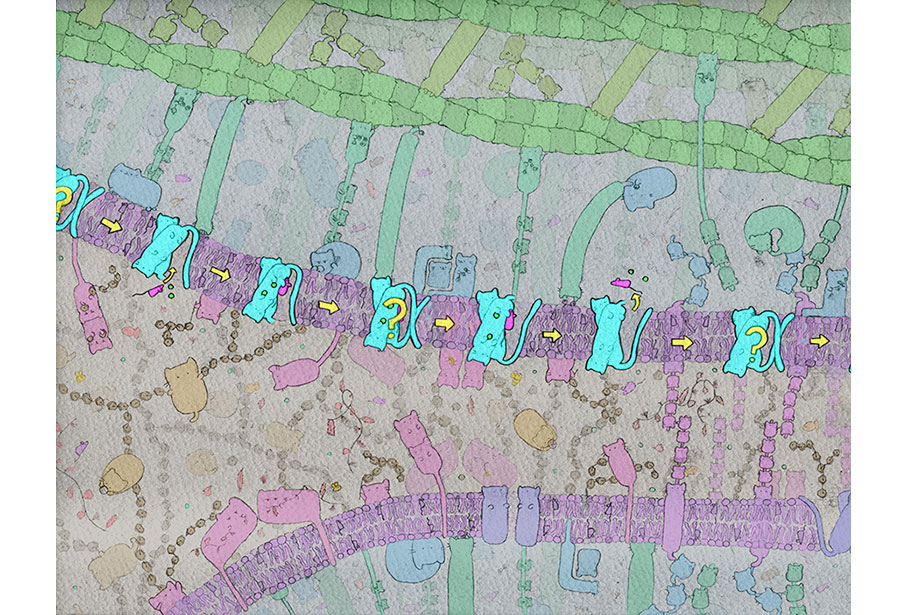The Biophysical Society's Annual Art of Science Image Contest took place again this year, during the 64th Annual Meeting in San Diego. The first place winning image was submitted by Fiona Naughton, a postdoc in Oliver Beckstein's lab at Arizona State University. Naughton took some time to share how she created the image and background on the science it represents.

Science and cats are two of my greatest loves in life. To be able to not only combine them, but in a way that other people can appreciate, has definitely been a great experience!
Explaining scientific concepts – to non-scientists, students, or even colleagues – can be challenging, especially if you’ve got limited time to do so. I’ve always liked the use of fun analogies to simplify the situation for this reason. I’m a computational biochemist, primarily using molecular dynamics simulations to study the structure and function of proteins. Often, key structural features or changes are clear to those familiar with a given system but are lost as a general protein blob to those who aren’t – so when it came time for me to describe my own work in an easily understandable way, I asked myself: what if these proteins were cats instead?
My current work involves the transporter ASBT (Apical Sodium-Bile acid Transporter). ASBT allows bile acids to be recycled from the digestive system, using the sodium gradient to drive transport. We want to know more about how ASBT works as it has potential for both improving drug absorption and, as bile acids are synthesised from cholesterol, in the treatment for high cholesterol. It has an ‘inverted repeat’ topology, with two repeats of the same structure but rotated 180°. These exchange between two conformations, alternately exposing substrate-binding sites to the extracellular or intracellular region and thus allowing bile acids (and sodium) transport into the cell.
It is the nature of this structural transition, along with the details of substrate binding, that forms the basis of my work and the focus of my image: ASBT (in cyan) is represented by two cats lying in opposite directions. They alternate the positions of their tails to change the direction from which toy rats (bile acid) and balls (sodium) may enter or leave their grasp. Also shown is a potential intermediate – an ‘occluded’ state, closed on both sides of the membrane.
I wanted my entry for the Art of Science contest to be bigger than just a single protein-cat, so, taking inspiration from David Goodsell (whose amazing images are some of what first drew me to structural biology), I decided to create a snapshot of the brush boarder of a small intestine enterocyte, where ASBT is located. Anything beyond ASBT was outside my usual scope, but after a lot of reading, exploring known structures, and trial sketches of how these might look as cats (with a healthy dose of artistic license!) the final drawing came together. The image is hand drawn, with the colours added digitally. Alongside ASBT you’ll find cats representing, among others, the actin, myosins, glucosidases and peptidases responsible for maintaining structure and aiding digestion in this region.
Overall, I was really happy with how my image turned out, and to get such a great response from the people at BPS2020 was amazing! Thanks to everyone who voted, or came up to tell me they’d enjoyed my image. Hope to see everyone again at a future BPS meeting!
I’m currently based at Arizona State University as a postdoc with Oliver Beckstein - you can read more on my page. You can also find me on Twitter @ExplainedByCats for more cat-based explanations of my work and beyond.